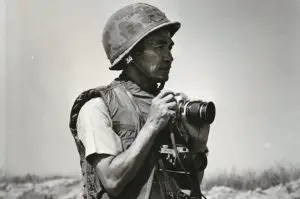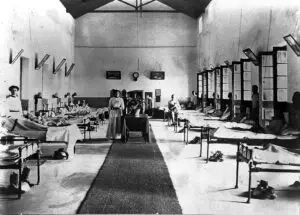
FULL POEM - SCROLL DOWN FOR LINE-BY-LINE ANALYSIS

LINE-BY-LINE ANALYSIS
STANZA 1
The sky is cloudy, yellowed by the smoke.
The narrator immediately sets the oppressive scene of a rapidly industrialising London. The imagery of the city and landscape evokes a sense of hostility – the ‘cloudy’, ‘yellowed’ sky describing the smog created by the heavily polluting factories and vehicles staining the city. The effect is to illustrate the environmental decline of the city towards depths of uninhability as the inverse relationship between industrialisation and living standards endures and accelerates.
For view there are the houses opposite
Cutting the sky with one long line of wall
Like solid fog: far as the eye can stretch
Monotony of surface & of form
The repetitivity of the skyline is captured by the simile, ‘cutting the sky with one long line of wall like solid fog’. ‘Cutting the sky’ metaphorically reflects the damaging impact of urbanisation on the environment, the damage it’s inflicting on the natural world akin to the harm inflicted by cuts from a knife. The comparison to ‘solid fog’ is a pathetic fallacy – fog associated with dullness and dreariness, harnessed by Elliot to emphasise London’s mundane and depressing urban landscape, devoid of natural beauty. The enjambement across these four lines also reflects the seemingly infinite array of terraced houses spanning the skyline, the continuity between lines mirroring their arrangement.
Without a break to hang a guess upon.
This line describes how the city’s homogeneity results in the loss of individuality, hence mystique ‘to hang a guess upon’, within the environment. The later lines reveal how this extends to the population, to whom urbanisation has reduced to souless entities devoid of social propensity. This cloning of society is a tragic phenomenon, referenced to highlight the harsh side effects of industrialisation.
No bird can make a shadow as it flies,
For all is shadow, as in ways o’erhung
By thickest canvass, where the golden rays
The ‘thickest canvass’ overhanging the city is a metaphor for the smog that shrouds the city. A byproduct of the heavily polluting factories and vehicles that line the city, its density is such that ‘all is shadow’, impenetrable to sunlight, such that ‘no bird can make a shadow as it flies’. While literally depicting the degrading environment, this imagery can be interpreted figuratively as a metaphor for the absence of hope amidst a rapidly industrialising London.
Are clothed in hemp. No figure lingering
Pauses to feed the hunger of the eye
Or rest a little on the lap of life.
‘The hunger of the eye’ is a metaphor for the innate human need for stimulation from both nature and social interaction. The lifestyle the narrator describes here, however, is devoid of this, leaving the soul, and the ‘eye’ for which it is a window, empty and unfilled. The overarching message is that, despite the lives and schedules of Londoner’s being more hectic than ever before, emotionally they have never been emptier with no time to ‘rest a little on the lap of life’ and take pleasure from it.
All hurry on & look upon the ground,
Or glance unmarking at the passers by
The wheels are hurrying too, cabs, carriages
All closed, in multiplied identity.
The comparison between the people and traffic bustling on the street dehumanises London’s population as a result of the lack of emotion they display and engage with, avoiding eye contact as they ‘look upon the ground’. The phrase ‘multiple identity’ emphasises how the people, devoid of individuality, blend into one entity ‘closed’ off to the surrounding environment, akin to a pack of ants merging into one identically looking colony.
The world seems one huge prison-house & court
Where men are punished at the slightest cost,
With lowest rate of colour, warmth & joy.
The poem’s depressive tone culminates in these concluding lines as the narrator likens the city to ‘one huge prison-house & court’. This signifies the extent of the decline of its inhabitants’ quality of life, their freedom sucked away alongside it as they are captured by the shackles of an industrialising society. The ‘lowest rate’, meaning lack of, the triplet ‘colour, warmth & joy’ ends on the bleak, dreary note that the narrator has established and intensified throughout the poem, leaving the reader with this lasting impression of modern society.


